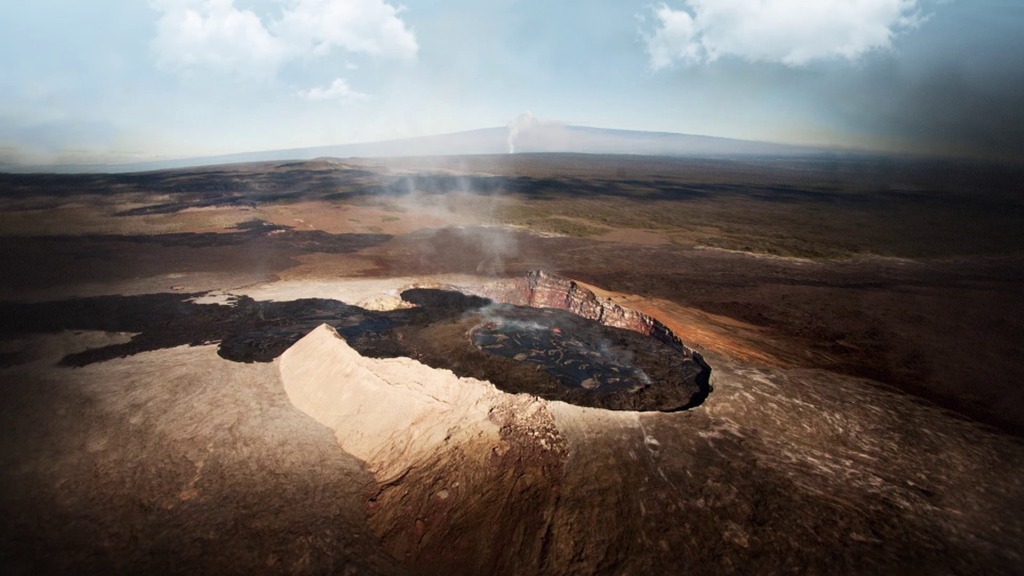Cloud Transformation
Volcanoes can spew lava, ash and smoke when they erupt. But even when they aren't erupting, gases can leak from their vents and form tiny particles in the atmosphere known as volcanic aerosols. Although smaller than a human hair, these particles can have a large effect on the properties of nearby clouds. A new study using NASA and European Space Agency satellite data has shown that volcanic aerosols can decrease the size of water droplets that make up clouds. The result may not seem significant, but clouds composed of smaller droplets tend to be brighter and reflect more sunlight back into space. This can affect weather patterns, such as altering winds and where rain falls. Watch the video to learn more.

Explore how active volcanoes change clouds.
Learn more about how scientists study the interaction of clouds and volcanic aerosols in this video.

Clouds are made up of spherical water droplets suspended in the atmosphere.

Gases released by volcanoes rise into the atmosphere and form volcanic aerosols (yellow) that interact with clouds.

Volcanic aerosols can change the size of cloud water droplets, making them smaller.
Credits
Please give credit for this item to:
NASA's Goddard Space Flight Center
-
Animators
- Brian Monroe (USRA)
- Joy Ng (USRA)
-
Interviewee
- Andrew Sayer (USRA)
-
Narration
- Joy Ng (USRA)
- Kayvon Sharghi (USRA)
-
Narrator
- Joy Ng (USRA)
-
Producer
- Joy Ng (USRA)
-
Scientist
- Andrew Sayer (USRA)
-
Writer
- Kasha Patel (Wyle Information Systems)
Release date
This page was originally published on Tuesday, November 25, 2014.
This page was last updated on Wednesday, May 3, 2023 at 1:50 PM EDT.
